- Ginger
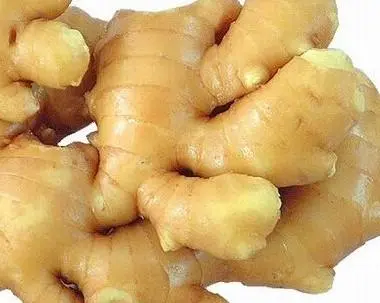
Ginger is one of the essential condiments in the kitchen, and it is also one of the medicinal and edible products recorded in ancient Chinese medicine books.
Ginger is a perennial herbaceous plant of the ginger family. Varieties include: Qingzhou bamboo root ginger, Shannong No. 1 ginger, Qingzhou small yellow ginger. Other names include ginger root, Bai Layun, hooked finger, Yindixin, Yanliang boy, fresh ginger, honey roasted ginger. The rhizome (dried ginger), cork (ginger skin), and leaves (ginger leaves) of ginger can all be used as medicine. Ginger has the effects of dispersing, stopping vomiting, and stopping coughing in traditional Chinese medicine.
- Garlic
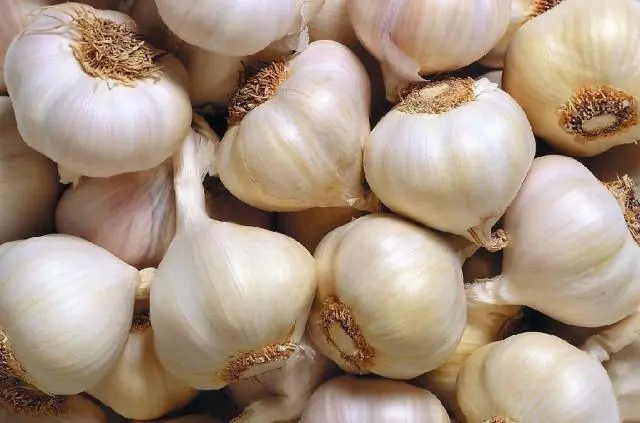
Garlic (scientific name: Garlic) is also called garlic, garlic, Hu garlic, gourd, single garlic, and single-headed garlic. It is a general term for garlic plants. It is a semi-annual herbaceous plant of the genus Allium in the lily family, and its bulbs are used as medicine. Harvest in spring and summer, tie into bundles, hang in a ventilated place, and dry in the shade for later use. A farmer’s proverb says “If you plant garlic before September, it will grow into a single head.” When the leaves wither in June, dig them up, remove the sand, and air dry or bake until the skin is dry.
Garlic is oblate or short conical, with grayish white or light brown membranous scales on the outside. After peeling off the scales, there are 6 to 10 garlic cloves inside, which are arranged around the flower stem. The base of the stem is disc-shaped and has many fibrous roots. Each garlic clove is covered with a thin film. After peeling off the film, you can see white, thick and juicy scales. It has a strong garlic odor and a spicy taste. It has a pungent smell and can be eaten or used for seasoning, and can also be used as medicine. The underground bulb is divided into purple and white varieties according to the skin color. Garlic was introduced to China from the Western Regions during the Qin and Han Dynasties. After artificial cultivation and breeding, it has anti-cancer effects and is deeply loved by the public.
- Aloe
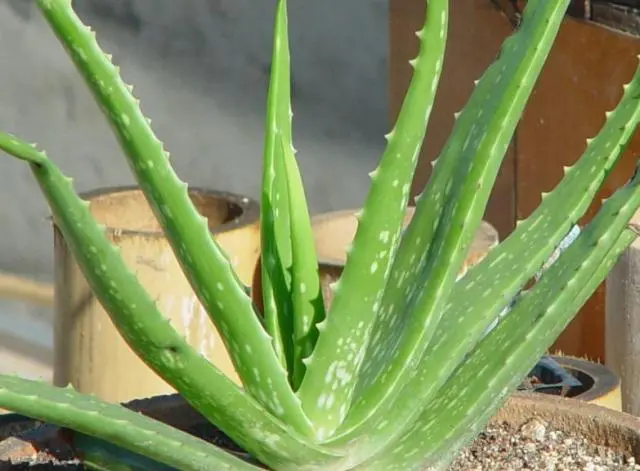
Aloe (scientific name: Aloe vera) is a perennial evergreen herbaceous plant of the Liliaceae family. Its leaves are clustered, large and thick, in a seat or on the top of the stem. The leaves are often lanceolate or short and wide, with sharp thorns on the edges. The inflorescence is umbrella-shaped, racemose, spike-shaped, conical, etc., red, yellow or with red spots, with six petals and six pistils. The base of the perianth is often connected into a tube.
Aloe is native to the Mediterranean and Africa. Because it is easy to plant, it is an ornamental plant with both flowers and leaves, and is quite popular with the public. According to research, there are more than 300 wild aloe varieties, but only six edible varieties. The main aloe varieties with medicinal value are: foreign aloe, Curaçao aloe, Cape aloe, Yuanjiang aloe, etc., and are even honored as “magic plants” and “family medicine boxes”. Warm reminder, aloe is toxic to a certain extent, and pregnant women and infants should not eat it.
- Wolfberry
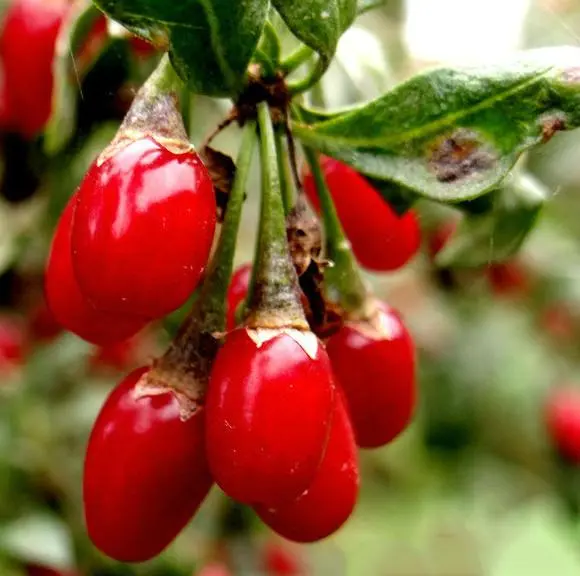
Wolfberry is a plant of the Solanaceae family and the genus Lycium. Wolfberry is a general term for species under the genus Lycium, such as commercial wolfberry, plant Ningxia wolfberry, and Chinese wolfberry. The wolfberries that people eat and use for medicine are mostly the fruits of Ningxia wolfberry, and Ningxia wolfberry is the only variety included in the 2010 edition of the Chinese Pharmacopoeia.
Ningxia wolfberry has the largest cultivation area in China. Ningxia wolfberry is mainly distributed in northwest China, while Chinese wolfberry and its variants are common in other regions.
If “wolfberry” refers to the commercial “wolfberry”, it basically refers to the dried mature fruit from Ningxia wolfberry; if “wolfberry” refers to wild wolfberry plants in areas other than the northwest, it is basically plant wolfberry or northern wolfberry.
- Chinese yam
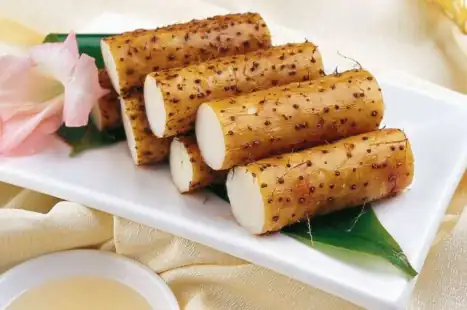
Dioscorea opposita Thunb. = Chinese yam, roughly equal to Chinese yam, larger than Chinese yam. Twining herbaceous vine. The tuber is long cylindrical and grows vertically; the stem is usually purple-red, right-handed, and hairless. Single leaves, alternate at the bottom of the stem, opposite above the middle, rarely three leaves in a whorl; leaves vary greatly, ovate-triangular to broadly ovate or halberd-shaped; in seedlings, leaves are generally broadly ovate or ovate, with a deep cordate base. There are often bulbils in the axils of leaves. Dioecious. Male inflorescence is a spike inflorescence; the inflorescence axis is obviously zigzag-shaped; bracts and tepals have purple-brown spots; the outer tepals of male flowers are broadly ovate. Female inflorescence is a spike inflorescence, 1-3 of which are born in the axils of leaves. The capsule is not reflexed, triangular-shaped and oblate or triangular-shaped and round; the seeds are born in the middle of the axis of each room, surrounded by membranous wings. Flowering period is June-September, and fruiting period is July-November.
Distributed in areas south of the Huaihe River in Anhui, Jiangsu, and Niutou Mountain in Zhongshan, Guangdong. There are also distributions in North Korea and Japan.
The tuber is a commonly used Chinese medicine “Huai yam”, which has the effects of strengthening and removing phlegm; it can also be eaten.
- Motherwort
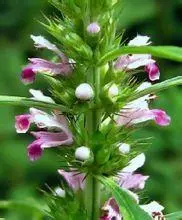
Motherwort, also known as: Leonurus, Leonurus, Kuncao, Jiuchonglou, Mica grass, Senti, Latin name: Leonurus artemisia (Laur.) S. Y. Hu F, is a plant of the Lamiaceae family and the genus Leonurus, which blooms in summer. Its dried above-ground part is a commonly used Chinese medicine, which is produced in most parts of China and is used raw or boiled into paste. Annual or biennial herbs are distributed in most parts of the country, growing in mountainous wastelands, ridges, grasslands, etc. It is picked when it grows luxuriantly in summer and the flowers are not fully opened. It tastes bitter and cool, promotes blood circulation, removes stasis, regulates menstruation, and eliminates water. It treats women’s irregular menstruation, fetal leakage and dystocia, retained placenta, postpartum blood fainting, abdominal pain due to blood stasis, metrorrhagia, hematuria, diarrhea, carbuncle, ulcers, etc.
Motherwort has the effects of diuresis, swelling reduction and uterine contraction. It is an important medicine used by doctors in all dynasties to treat gynecological diseases.
Motherwort can be used as a whole plant. The active ingredient is leonurine. Motherwort contains a variety of alkaloids such as leonurine, stachydrine, leonuridine, leonurine, benzoic acid, potassium chloride, etc.
Motherwort preparations have the effect of stimulating the animal uterus, similar to posterior pituitary hormone. Motherwort extract and decoction have a strong and lasting stimulating effect on the uterus, which can not only enhance its contraction force, but also increase its tension and contraction rate.
- Honeysuckle
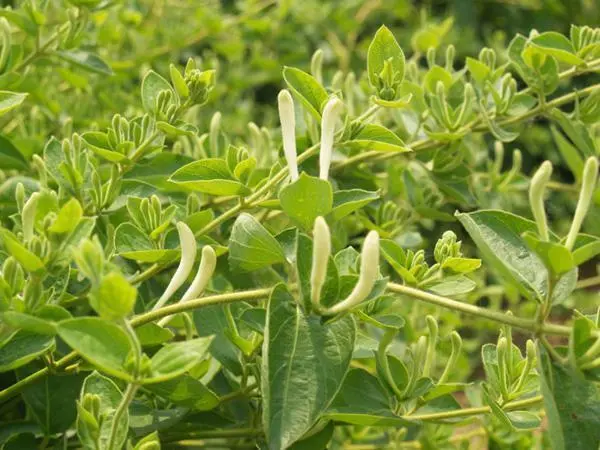
Honeysuckle, also known as honeysuckle (scientific name: Lonicera japonica). The name “honeysuckle” comes from “Compendium of Materia Medica”. Because honeysuckle flowers are white when they first bloom and then turn yellow, they are named honeysuckle. The medicinal material honeysuckle is the dried buds or flowers with the first bloom of honeysuckle and plants of the same genus in the Caprifoliaceae family.
Honeysuckle, blooming in March, has five petals, a slight fragrance, and a red stalk. The flowers are white when they first open, and turn yellow after one or two days, hence the name honeysuckle. Because there are two flowers on one stalk, and two stamens sticking out, they are in pairs, inseparable, like a male and female accompanying each other, and like a mandarin duck dancing, it is also called the mandarin duck vine.
The most obvious feature of this species is that it has large leaf-like bracts. It looks a bit like the South China honeysuckle, but the bracts of that species are narrow and not leaf-like, the calyx tube is densely covered with short soft hairs, and the twigs are densely covered with curly short soft hairs, which is obviously different from this species. The morphological variation of this species is very large, whether in the hair of branches and leaves, the shape and size of leaves, the length of the corolla, the hair and the ratio of the length of the lip to the tube, etc., there are great changes. However, all these changes seem to be more related to the ecological environment, and do not show a correlation with geographical distribution. Honeysuckle has been praised as a good medicine for clearing heat and detoxification since ancient times. It is sweet, cold and aromatic. It can clear away heat without hurting the stomach. Its fragrance is penetrating and can dispel evil. Honeysuckle can not only dissipate wind-heat, but also clear away blood poison. It is used for various febrile diseases, such as fever, rash, spots, heat-toxic sores, sore throat, etc., and the effect is remarkable.
8.Chrysanthemum

Chrysanthemum: In plant taxonomy, it is a perennial herbaceous plant of the Asteraceae and Chrysanthemum genus. According to the cultivation form, it is divided into multi-headed chrysanthemum, single-stem chrysanthemum, large upright chrysanthemum, cliff chrysanthemum, art chrysanthemum, desk chrysanthemum and other cultivation types; according to the appearance of the petals, it is divided into garden embrace, retreat embrace, reverse embrace, random embrace, dew heart embrace, flying noon embrace and other cultivation types. Different types of chrysanthemums are named with various varieties.
Chrysanthemum is the third of the top ten famous flowers in China, one of the four gentlemen in flowers (plum, orchid, bamboo and chrysanthemum), and one of the four major cut flowers in the world (chrysanthemum, rose, carnation, gladiolus), with the highest output. Because chrysanthemums have the character of being cold and proud of the snow, Tao Yuanming wrote the famous sentence “Picking chrysanthemums under the eastern fence, leisurely seeing the southern mountains”. Chinese people have the custom of appreciating chrysanthemums and drinking chrysanthemum wine on the Double Ninth Festival. In the Tang Dynasty, Meng Haoran wrote in “Visiting an Old Friend’s Farm”: “Wait until the Double Ninth Festival, and come back to chrysanthemums.” In ancient myths and legends, chrysanthemums are also given the meaning of auspiciousness and longevity.
Chrysanthemums are precious ornamental flowers that have been cultivated through long-term artificial selection. Around the 8th century AD, chrysanthemums were introduced from China to Japan as ornamental flowers. Dutch merchants introduced Chinese chrysanthemums to Europe in the late 17th century, to France in the 18th century, and to North America in the mid-19th century. Since then, Chinese chrysanthemums have spread all over the world.
- Isatis root
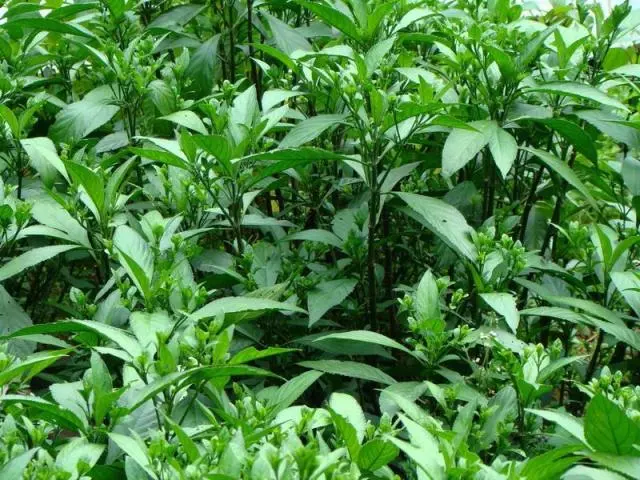
Isatis root (commonly known as indigo root, blue indigo root, and big indigo root) is a Chinese medicinal material. It is the dried root of the cruciferous plant Isatis indigotica, usually dug in autumn, and can be used as medicine after processing. It is produced in various parts of China. Isatis root is divided into northern isatis root and southern isatis root. The northern isatis root comes from the root of Isatis tinctoria L., a plant of the cruciferous family; the southern isatis root comes from the rhizome and root of Baphicacanthus cusia (Nees) Brem., a plant of the Acanthaceae family. It is cold in nature, tastes slightly sweet at first and then bitter, and has the effects of clearing heat and detoxifying, preventing colds, and relieving sore throat. It is mainly used to treat diseases such as fever and rashes, dark purple tongue, and sore throat.
- Plantago
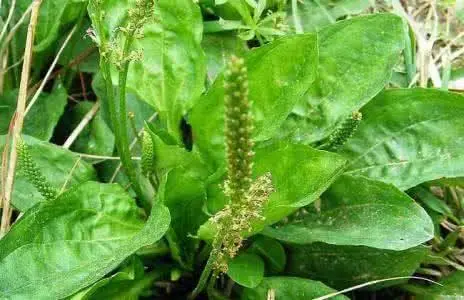
Plantago, commonly known as plantain. Annual or biennial herb. Long taproot, with many lateral roots, more or less fleshy. Short rhizome. The leaves are basally rosette-shaped, lying flat, obliquely spread or erect; the leaves are papery, elliptical, elliptical-lanceolate or ovate-lanceolate, and the base of the petiole is expanded into a sheath. The peduncle has longitudinal stripes and is sparsely covered with white short soft hairs; the spike inflorescence is fine and cylindrical. The calyx is glabrous, and the corolla is white and glabrous. The stamens are attached to the inner surface of the corolla tube near the top, and the style is obviously extended outward. The anthers are ovate-elliptical or broadly elliptical, white or greenish-white when fresh, and turn light brown after drying. There are 5 ovules. The capsule is ovate-elliptical to conical-ovate. There are 4-5 seeds, which are elliptical, flat on the ventral surface, yellow-brown to black; the cotyledons are arranged dorsally and ventrally. The flowering period is from May to July, and the fruiting period is from July to September.
It grows in grasslands, riverbanks, ditches, meadows, fields and roadsides, at an altitude of 5-4500 meters. It is also distributed in most parts of China, North Korea, Russia (Siberia to the Far East), Kazakhstan, Afghanistan, Mongolia, Pakistan, Kashmir, and India.
The whole plant of Plantain chinensis is sweet and cold in nature. It has the effects of diuresis, clearing heat, improving eyesight, and removing phlegm. The young plant is edible.
- Perilla

Perilla, also known as Ren in ancient times, is also known as Su, Baisu, Guiren (Er Ya), Renzi, Chisu, Hongsu, Xiangsu, Heisu, Baishisu, Qingsu, Yesu, Suma, Sucao, Tangshisu, Wrinkled Leaf Su, Jisu, Stinky Su, Dashisu, False Shisu, Shuishengma, Yehuoma, Longerma, Zizhu, Xingpashaga (Tibetan), etc. It is the only species under the genus Perilla of the Lamiaceae family. It is an annual herb and is mainly produced in Northwest China, Southeast Asia, Taiwan, central and southern China such as Jiangxi and Hunan, and the Himalayas. It has also been introduced to Japan, Myanmar, the Korean Peninsula, India, and Nepal, and it also grows in North America. It was introduced earlier in Shaanxi and Gansu in my country. Qingyang, Gansu has a 2000-year cultivation history. As one of the oil sources, it has rich Perilla resources.
